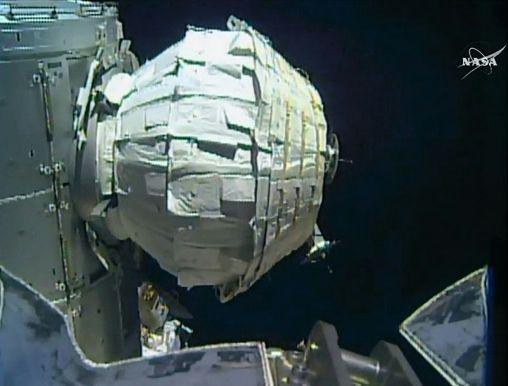Good question.
Tiny balls of cancerous cells are being printed off by researchers at Heriot Watt University in Edinburgh who hope it can provide new ways of testing drugs and studying brain cancers.
Good question.
Tiny balls of cancerous cells are being printed off by researchers at Heriot Watt University in Edinburgh who hope it can provide new ways of testing drugs and studying brain cancers.

My new article for Vice Motherboard on extreme biohacking that compares the Uncanny Valley to Speciation Syndrome:
Transhumanism tech like CRISPR, 3D printing, and coming biological regeneration of limbs will not only change lives for those that have deformities, but it will change how we look at things like a person with a three-foot tail and maybe even a second head.
At the core of all this is the ingrained belief that the human being is pre-formed organism, complete with one head, four limbs, and other standard anatomical parts. But in the transhumanist age, the human being should be looked at more like a machine—like a car, if you will: something that comes out a particular way with certain attributes, but then can be heavily modified. In fact, it can be rebuilt from scratch.
In the future, there may even be walk-in clinics where people can go to have various gene treatments done to affect their bodies. Already, we have IVF centers where people can use radical tech to privately get pregnant—and also control and monitor various stages of a child’s birth. Eventually, if government allows it, gene editing centers will also offer a multitude of designer baby traits, some which also would come via CRISPR. We might even eventually use artificial wombs for the whole process.
Economically, a trillion dollar industry could be created by the burgeoning genetic editing industry—one that greatly benefits human health and science innovation. But of course, first we must get over our fears of modifying the human body and the effects of speciation syndrome.


With 3D printers (like the one in India) printing buildings while leveraging AI technology we could see the building of complexes in space v. needing an inflatable room.
NASA on Saturday successfully expanded and pressurized an add-on room at the International Space Station two days after aborting the first attempt when it ran into problems.
The flexible habitat, known as the Bigelow Expandable Activity Module (BEAM), completed slowly extending 67 inches (170 centimeters) at 4:10 pm (2010 GMT) following more than seven hours during which astronaut Jeff Williams released short blasts of air into the pod’s walls from the orbiting lab using a manual valve.
After the expansion was completed, he opened eight air tanks inside BEAM, pressurizing the pod to a level close to the space station’s 14.7 pounds per square inch.

Awesome.
The 3D-printed office was constructed using a special mixture of cement and a set of building material designed and made in the UAE and the United States. To ensure reliability, the materials have undergone a range of tests in both China and the United Kingdom.
A 3D-printer measuring 20-feet high, 120-feet long and 40-feet wide was used to print the building that featured an automated robotic arm to implement printing process.


Over the recent 6 months, we have been able to successfully prove how Synthetic diamonds helps stabilize QC and will be a key part of the semiconductor equation. And, we recognize that some of the worlds top labs are in Russia. However, where are we now with 3D printing in mass producing the same grade quality of those found in Russia? And, how far off are we in having 3D printers from producing the synthetic diamonds that have the reliable quality and performance that we require for QC? Here is an article from 2015; however, not much has been shared since.
JCK Magazine offers readers expanded coverage of the most important jewelry industry issues and style trends impacting their businesses.

Latest on 3D printed Synthetic hair.
Makeup brushes haven’t changed all that much over the last century. Sure, brands have figured out how to create synthetic fibers and played around with handle placement, but otherwise, there hasn’t been a whole lot of innovation, especially compared with the developments we’ve seen in skin care and cosmetics. But that could all change thanks to the creation and testing of 3D-printed hair by researchers at the Massachusetts Institute of Technology’s Tangible Media Group.
3D-printed hair isn’t technically a new innovation; MIT unveiled the first 3D-printed hair about a year ago. What’s new is that since then, the researchers have explored the exciting possibilities of the technology. In a recently released paper, the Tangible Media Group details the creation of its Cillia program, which allows for the 3D printing of both flat and curved surfaces covered in extremely fine, tightly packed, artificial hairs. What’s so cool is just how small they can make the hairs—as tiny as 50 microns across—giving them the ability to create highly dense hairy or furry surfaces that were previously only possible in nature. And because they can get the hair that small, it allows the company to control a whole bunch of things like the length, thickness, and density of each individual hair that’s printed.


3D Stem Cells — definitely makes sense given the organ, skin graffe, etc. produce on 3D printers in today’s labs.
JERUSALEM – Israeli 3D printer firm Nano Dimension has successfully lab-tested a 3D bioprinter for stem cells, paving the way for the potential printing of large tissues and organs, the company said on Wednesday.
While 3D printers are used already to create stem cells for research, Nano Dimension said the trial, conducted with Israeli biotech firm Accellta Ltd, showed its adapted printer could make large volumes of high resolution cells quickly.
“3D bioprinting enabled by the two companies’ technologies, means that Nano Dimension and Accellta have the potential to accelerate high fidelity and high viability manufacturing of living cellular products,” the companies said.
